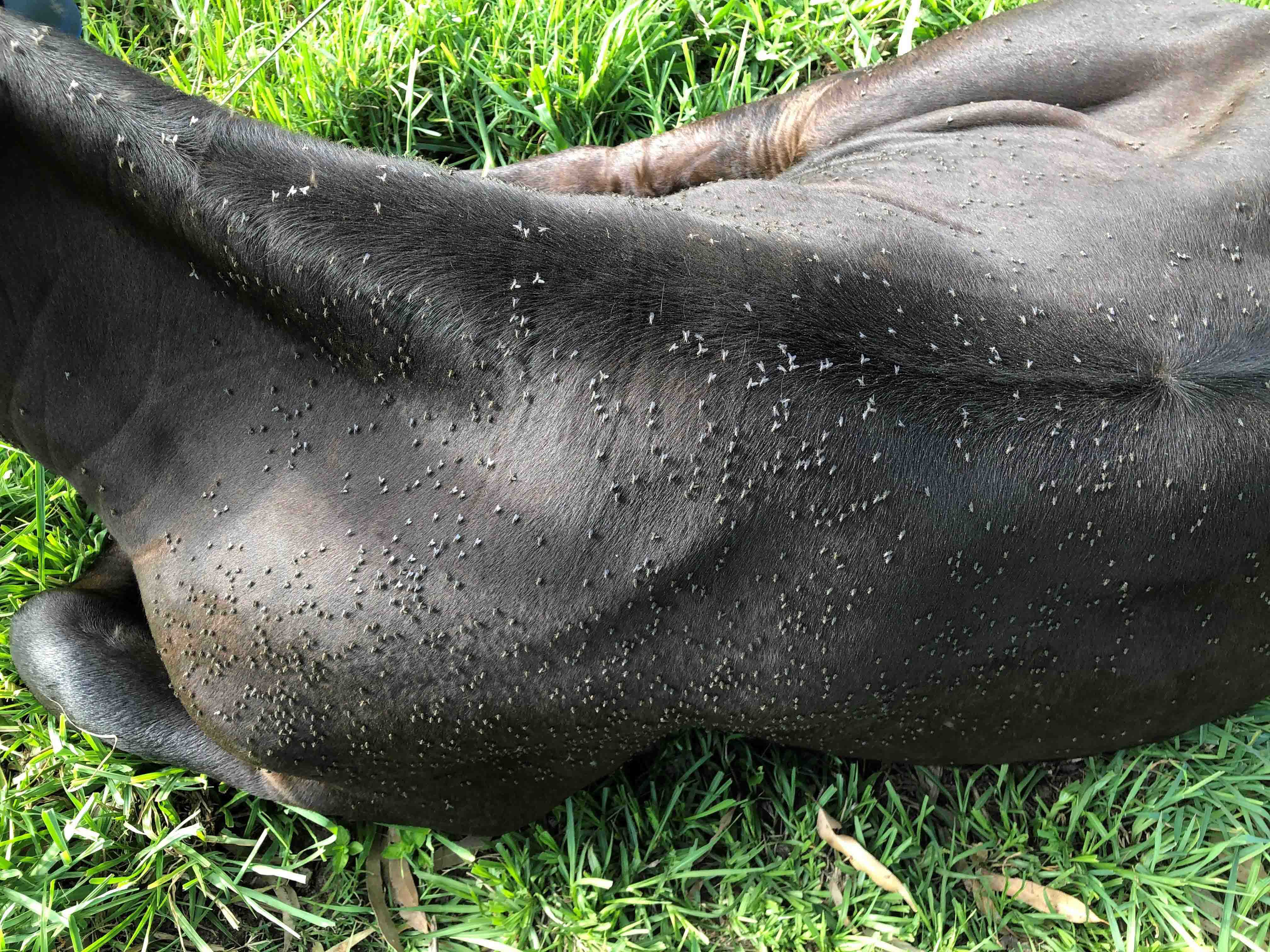Pesky Buffalo Fly Swarms North Coast
03 Feb 2021
Recent warm and clammy weather has seen a spike in buffalo fly numbers infesting cattle across the North Coast, experts warn.
The buffalo fly, Haematobia irritans exigua, is a small biting fly, about 4mm long in size. It feeds off cattle and buffalo and causes irritation which can result in significant weight loss and a decline in milk production.
North Coast Local Land Services District Veterinarian Liz Bolin said some cattle are allergic to the buffalo flies and are intensely irritated by as few as four or five flies.
“These cattle scratch and rub themselves constantly which results in large sores on their necks and sides,” Liz said.
“Many infested cattle also develop sores in the inner corners of their eyes.”
Liz said newly emerged flies will fly for up to 10 km in search of a host and the movement of infested animals can also spread the fly to new sites.
To hinder cattle infection, North Coast Local Land Service recommends producers apply an integrated management program for the control of buffalo flies.
Chemical control options include synthetic pyrethroids (SPs), organophosphates (OPs) and macrocyclic lactones (MLs).
These chemicals can be applied via impregnated plastic ear tags, sprays, pour-ons, plunge dips or back rubbers.
Liz warned producers to follow the label instructions carefully as there has been several reports of cattle becoming intoxicated and even dying due to the mixing of topical preparations at the wrong concentration.
“Chemical resistance can also occur when chemicals are mixed or applied at lower than recommended concentrations or dose rates, or when insecticidal ear tags are not removed at recommended times,” she said.
Non-chemical control options available include buffalo fly traps, culling allergic cattle and dung beetles.
North Coast Local Land Services General Manager Louise Orr said the aim of an integrated program for the control of this parasite was to enable producers to reduce fly numbers to acceptable levels for efficient production without compromising on animal welfare, chemical residues and chemical resistance.
ENDS
Media contact: Emily Findlay, North Coast Local Land Services, 0419221136
Photo Caption: Producers in the North Coast have seen a spike in buffalo fly numbers infesting cattle
